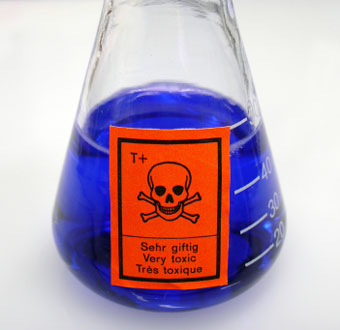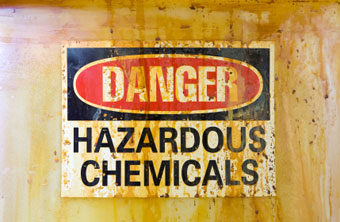Global Environmental Regulations Implications for North American Business
As everyone knows, a variety of substances exist that are harmful both to the environment and to its inhabitants. However, what may come as a surprise is the varying degree to which product manufacturers, distributors and vendors are held accountable for substances contained in their products. Worldwide, governments, non-governmental organizations (NGOs) and industry have taken varying measures to prevent exposure to toxic substances. Environmental compliance has traditionally been tasked to governments, with the European Union (EU) being the most progressive governing body to date. Given the nature of global supply chains, its legislation on environmental regulations has profound implications for companies throughout the world, most particularly in North America (NA).
The largest and most comprehensive environmental regulation in the world is REACH – Registration, Evaluation, Authorisation and Restriction of Chemical substances. This regulation encompasses components of virtually all environmental regulations worldwide.
What is REACH?
REACH is a new European Community Regulation on chemicals and their safe use, which entered into force on 1 June 2007. According to the European Commission, “The aim of REACH is to improve the protection of human health and the environment through the better and earlier identification of the intrinsic properties of chemical substances. The REACH Regulation gives greater responsibility to industry to manage the risks from chemicals and to provide safety information on the substances.

© iStockphoto.com/inakiantonana
“Manufacturers and importers will be required to gather information on the properties of their chemical substances, which will allow their safe handling and to register the information in a central database run by the European Chemicals Agency (ECHA) in Helsinki. . . . The Regulation also calls for the progressive substitution of the most dangerous chemicals when suitable alternatives have been identified.”
The bottom line is that article (finished goods) manufacturers must disclose harmful chemicals in their products. These chemicals are identified as substances of very high concern (SVHC). Chemical manufacturers must register these substances with the ECHA and submit a dossier containing test data and safe-use information.
REACH will be phased in over 11 years. Although, according to the European Commission, 30 November 2010 was the deadline “for registration of most hazardous substances (e.g. carcinogenic, mutagenic or toxic [for reproduction] chemicals [CMRs]) . . .” In addition, new rules on classification, labelling and packaging (CLP) required reclassification by 1 December 2010 and mixtures by 1 June 2015. (For more information go to http://echa.europa.eu.)
Why REACH?
The European Commission’s Environment Directorate General released an October 2007 “REACH in Brief” document to answer questions such as: Why do we need REACH? How does REACH work? What are the benefits and costs? What was the decision-making process? How will REACH be implemented? The document explains: “The former EC legislative framework . . . did not produce sufficient information about the effects of the majority of existing chemicals on human health and the environment. . . . Although some information exists on the properties and uses of existing substances, there is generally a lack of sufficient information publicly available in order to assess and to control these substances effectively.
“Furthermore, the former legislation required the manufacturers and importers of chemicals to provide information, but it did not impose similar obligations on downstream users . . . Thus, information on uses of substances was difficult to obtain and information about the exposure arising from downstream uses was generally scarce.
“With regard to benefits, positive occupational impact and public health impact is expected as chemicals are linked to respiratory and bladder cancers, mesothelioma, skin disorders, respiratory diseases, eye disorders, asthma, etc. Increased information on hazards and controls will help better implement existing legislation. Authorisation of substances of very high concern and speedier restrictions will also assist the positive occupational and public health, and positive environmental impact of REACH.”

© iStockphoto.com/inakiantonana
The EC Environmental Directorate General continues by assessing public health benefits, which were “based on World Bank estimates and a number of prudent assumptions. Diseases caused by chemicals were assumed to account for some one percent of the overall burden of all types of disease in the EU. Assuming a 10 percent reduction in these diseases as a result of REACH would result in a 0.1 percent reduction in the overall burden of disease in the EU. This would be equivalent to around 4,500 deaths due to cancer being avoided every year. On the basis of a €1 million value of life, the potential health benefits of REACH were then estimated to be roughly €50 billion over a 30-year period.
“All in all, REACH will contribute to reduced pollution of air, water and soil, as well as to reduced pressure on biodiversity. Improved control of persistent bio-accumulative and toxic substances is needed to ensure these substances are prevented from polluting the environment. . . . In addition, REACH will help to reduce the effects from endocrine disrupting chemicals.”
Enforcement Information
REACH is enforced by three main parties:
- Government. EU member states have mandated agencies to enforce this regulation. Penalties, at the extreme limits, list millions of dollars in fines and potential imprisonment for violations.
- NGOs. Currently, the most active parties for enforcement of these environmental regulations are non-governmental organizations. As an example, the most in-depth enforcement project to date targeted over 60 retailers (including Tesco and Toys R Us) and brands such as Phillips, Sony and Disney. The European Environmental Bureau (EEB) consortium made information requests to various retailers while also testing many of their products for harmful chemicals. The results were then published. Less than 25 percent of the retailers responded adequately to these information requests. Subsequently, they could face enforcement, on top of brand damage, for not only having harmful chemicals, but also for not responding to information requests.
- Industry. Any company that manufactures or sells products that pass through the EU at any point in their lifecycle will be subject to REACH industry compliance. And, an exporter cannot register itself. According to REACH, this “obligation . . . must be fulfilled by the importers or by a company established in the EU that the exporter nominates as its Only Representative.”
North American Business Implications
- Any North American company trying to do business in the EU can be targeted and required to comply with these environmental regulations.
- Companies in both the United States and Canada are behind the times with outdated restricted substance regulations.
- Requests for Proposals (RFPs) will make North American companies, which are trying to do business in the EU, comply with these regulations. The choice is to comply or lose market share.
Assent Compliance global consultants have seen North American businesses react to REACH environmental regulations in a manner not unlike the Kübler-Ross grief model. The five company stages break out as follows:
-

© iStockphoto.com/BanksPhotos
Denial – an outright denial by some companies to acknowledge that this regulation can affect them. While the majority of companies are beyond this stage, it’s still a prevalent sentiment –about 25 percent.
- Anger – any change from the status quo in a large organization may cause anger in those burdened with extra work. This can undoubtedly cause internal frustration with regard to means of compliance, budget decisions and plans for moving forward. During this early planning stage, companies have trouble making decisions and typically seek advice – about 30 percent.
- Bargaining – with any legislation there can be exemptions, addendums or clauses that may absolve a party of some portion of their responsibility. This is not typically the case for REACH. Although the “bargaining” stage is not prevalent, it does occur in some companies – about 5 percent.
- Depression – typically a company will tender several requests for consultants to make suggestions and to better inform internal stakeholders on instituting a compliance process or system. Although this phase does not effect the organization as a whole, the compliance team itself frequently feels incapable of undertaking the task either due to perceived understaffing or adverse impact by their supply chain. This stage is more of a “micro” state, which follows the organization’s acceptance of REACH requirements – about 20 percent.
- Acceptance – once organizations accept the reality that environmental regulations are real, enforceable and can affect their bottom line, the typical response is an “Alright, let’s do it” approach – about 20 percent. As one Assent client noted: “Has our business model changed? No? If our business model includes selling our products globally then we’re going to comply with environmental regulations. It’s simple. We’re not afraid of challenges at this company.”
Business Best Practices
The European Commission’s new chemical strategy provides for seven objectives that will ensure a balanced framework of sustainable development. They include: 1.) protection of human health and environment, 2.) maintenance and enhancement of competitiveness, 3.) prevention of internal market fragmentation, 4.) increased transparency, 5.) integration of international efforts, 6.) promotion of non-animal testing, and 7.) conformity with EU international obligations under the World Trade Organization. These objectives are necessary for any company to remain healthy in the global marketplace, which is why this is a win-win for North American companies.
U.S. and Canadian companies can easily comply with REACH environmental regulations by taking several implementable measures, which include having a system in place to manage supply chain and to respond to information requests from enforcement authorities. (This typically includes dedicated staff and a software platform.) To accomplish this, companies may need either external consultants or internal experts to guide them. Finally, a company should create a business relationship with a test lab or consultants to provide testing stewardship in case product testing is required.
All companies migrate in one way or another through the Kübler-Ross stages of environmental compliance. However, what’s most important is that they manage this migration or process as productively as possible since a successful outcome will ensure better quality products, a healthier environment and healthier citizens in the global community – which ensures a better bottom line for all.
For more information on REACH click here. For more information on ECHA fact sheets and guidance click here.

U.S. Navy photo by Mass Communication Specialist 1st Class Michael B. Watkins





























